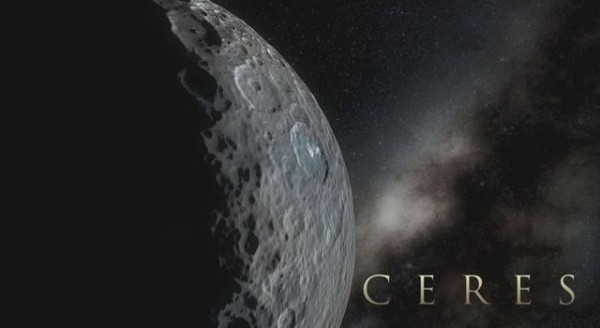By Ana Verayo, | January 31, 2016

Simulated view of Dwarf planet Ceres using images from NASA's Dawn spacecraft.
Dwarf planet Ceres is famously known for its mysterious bright spots that are apparently caused by salt deposits under its surface however, apart from these, NASA just released a new video of the icy world, revealing more of its incredible features.
Like Us on Facebook
Ceres is located in the major asteroid belt between Mars and Jupiter where NASA's Dawn spacecraft have completed a flyby of the planet, from August to October 2015. The probe's onboard high resolution camera captured its remarkable surface features that have been transformed into a new video from actual footage, simulating Dawn's flight over the dwarf planet.
The spacecraft zoomed into Ceres from a distance of 900 miles above its surface, where this new video was released on Friday. According to Dawn mission scientist, Ralf Jaumann, this flyby simulation reveals different crater shapes that have been spotted over the terrain of Ceres. For example, the viewer can see the sheer walls of the Occator crater, where the bright spots are found, including Dantu and Yalode craters that are much more flatter.
In the beginning of the video, the Occator crater is featured during this flyby where the bright spots are nestled inside. The other features on the dwarf planet are then revealed which are named after deities, festivals and agricultural spirits on Earth such as Urvara, Ikapati and Haulani, according to NASA.
The breathtaking computer generated effects in this new video are also reminiscent of alien worlds featured in sci-fi films, however, this is an actual, real cosmic object in our solar system some 257 million miles away, which is quite an incredible sight.
Scientists have enhanced the video with some coloring effects to make the features more distinguishable where the blue shaded regions depict younger material that is just recently produced along with pits, cracks and flows.
To date, the Dawn probe is still orbiting Ceres and capturing images and obtaining scientific data from 240 miles above its surface. Mission scientists are also in the process of consolidating this precious data from the heavily cratered planetoid in the next few months, where this new video reveals a more detailed look compared to a similar animation released last June 2015.
-
Use of Coronavirus Pandemic Drones Raises Privacy Concerns: Drones Spread Fear, Local Officials Say

-
Coronavirus Hampers The Delivery Of Lockheed Martin F-35 Stealth Fighters For 2020

-
Instagram Speeds Up Plans to Add Account Memorialization Feature Due to COVID-19 Deaths

-
NASA: Perseverance Plans to Bring 'Mars Rock' to Earth in 2031

-
600 Dead And 3,000 In The Hospital as Iranians Believed Drinking High-Concentrations of Alcohol Can Cure The Coronavirus

-
600 Dead And 3,000 In The Hospital as Iranians Believed Drinking High-Concentrations of Alcohol Can Cure The Coronavirus

-
COVID-19: Doctors, Nurses Use Virtual Reality to Learn New Skills in Treating Coronavirus Patients







